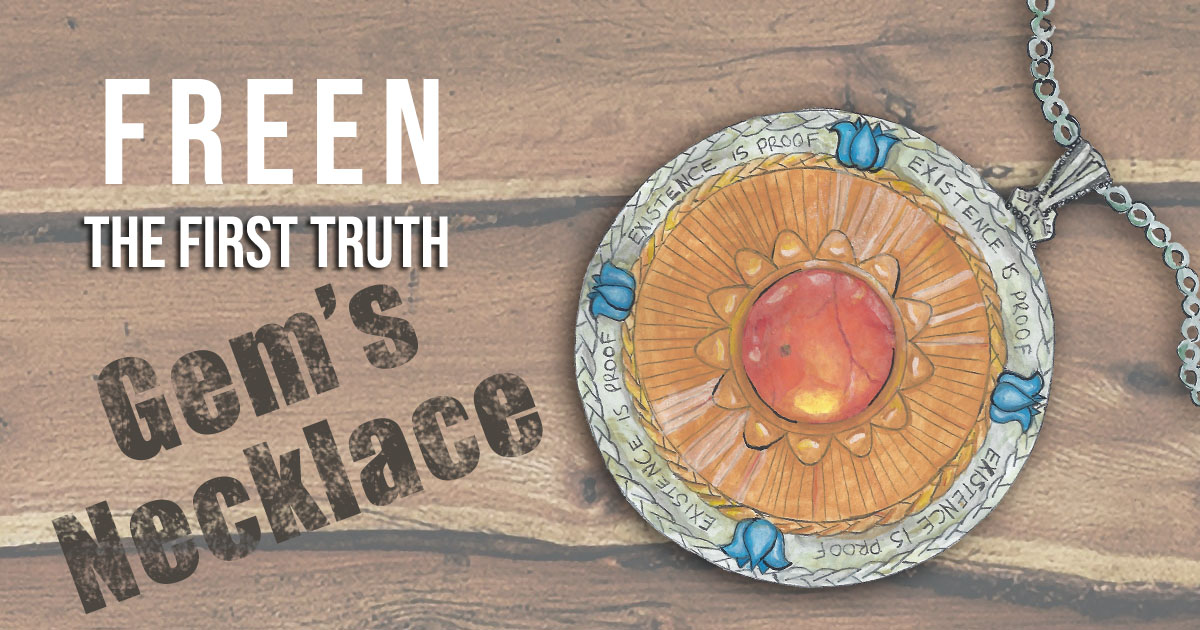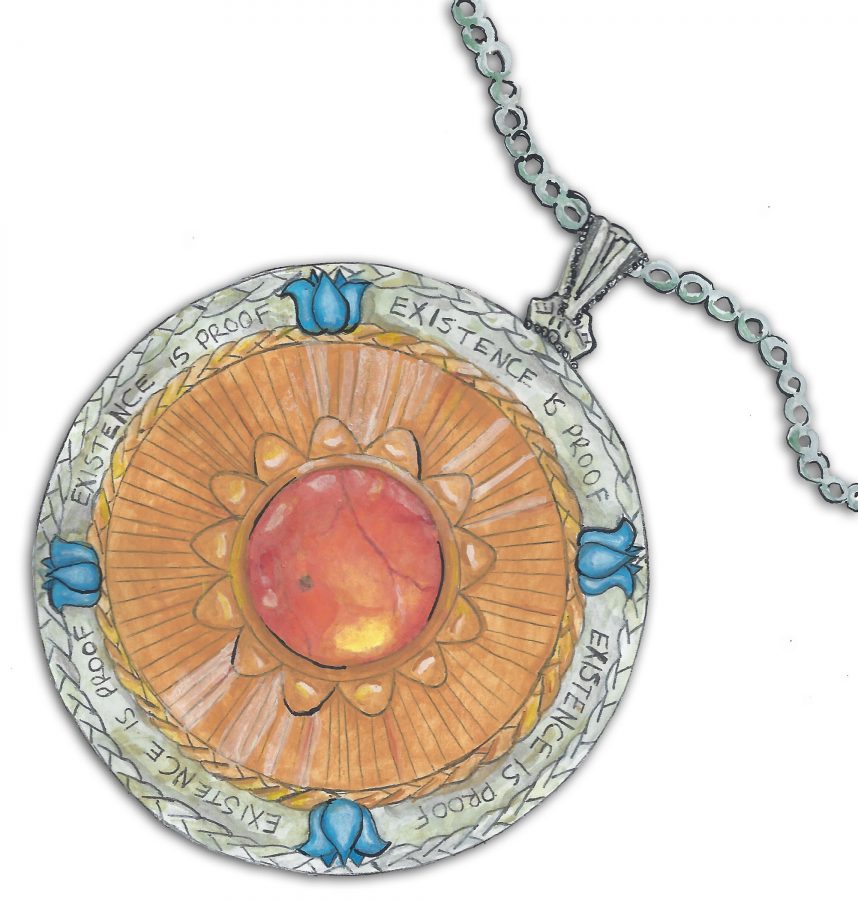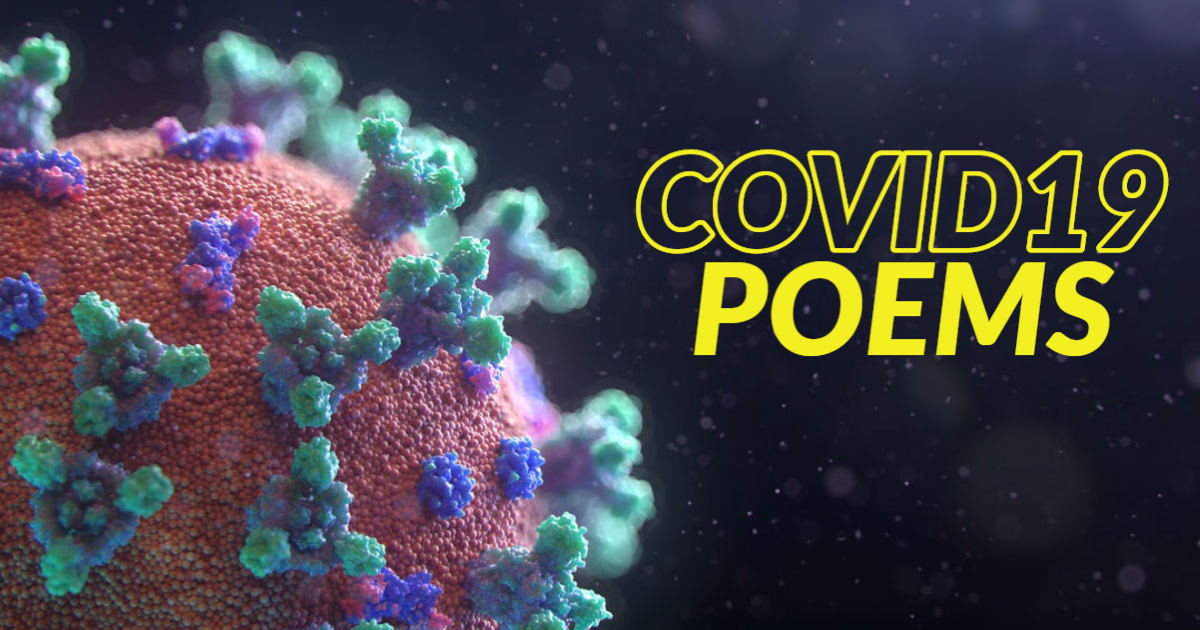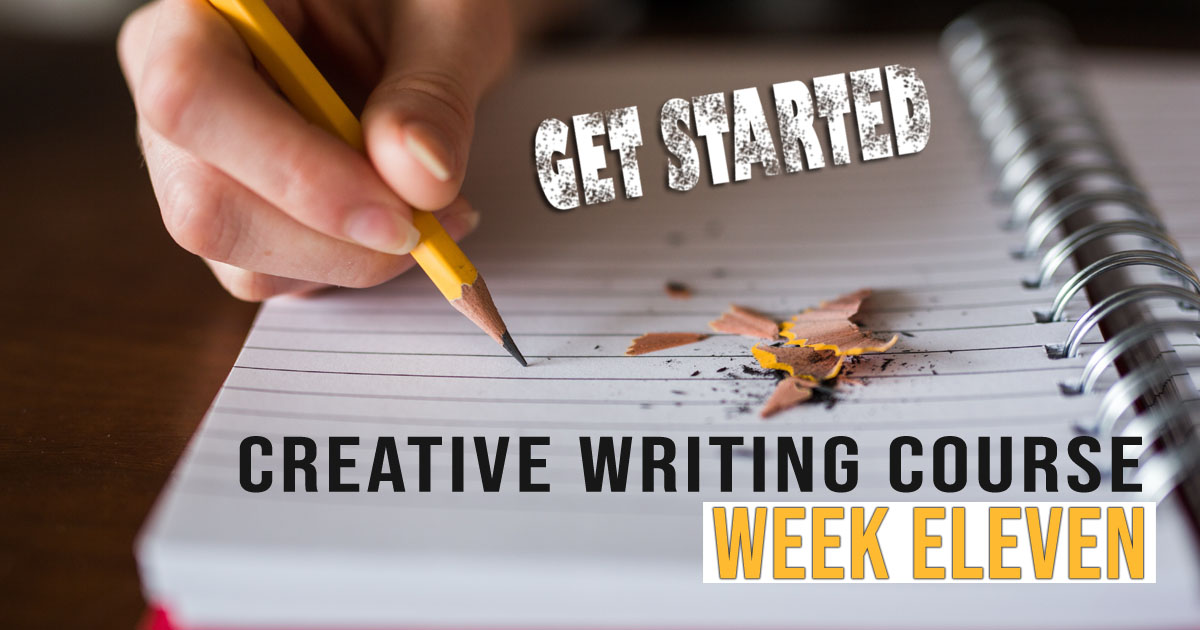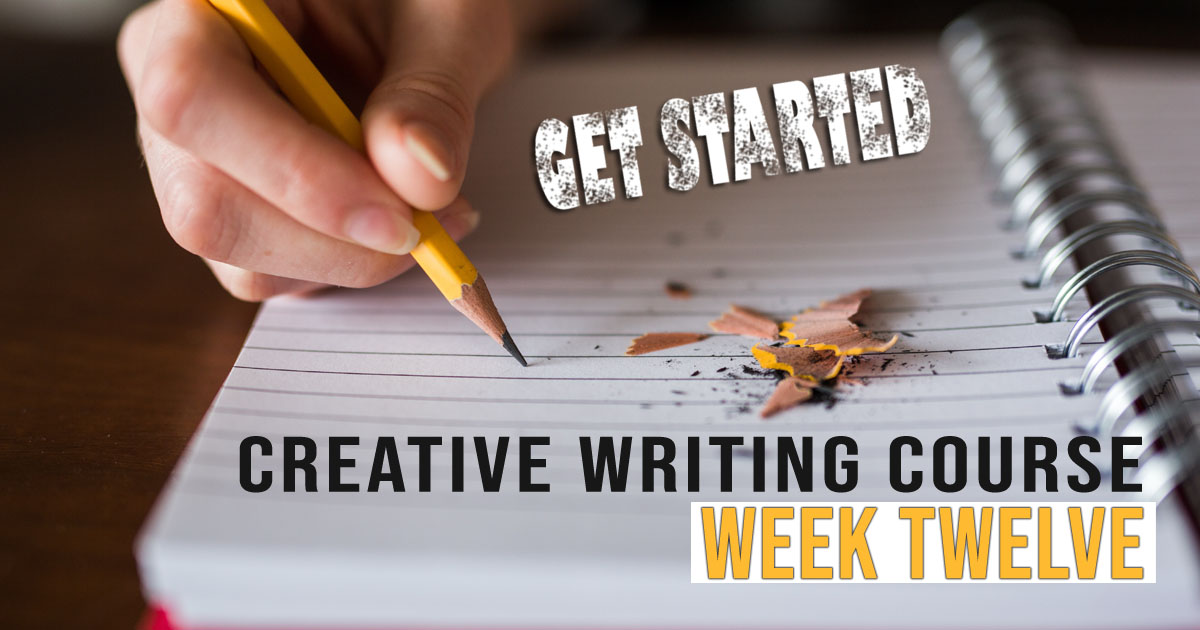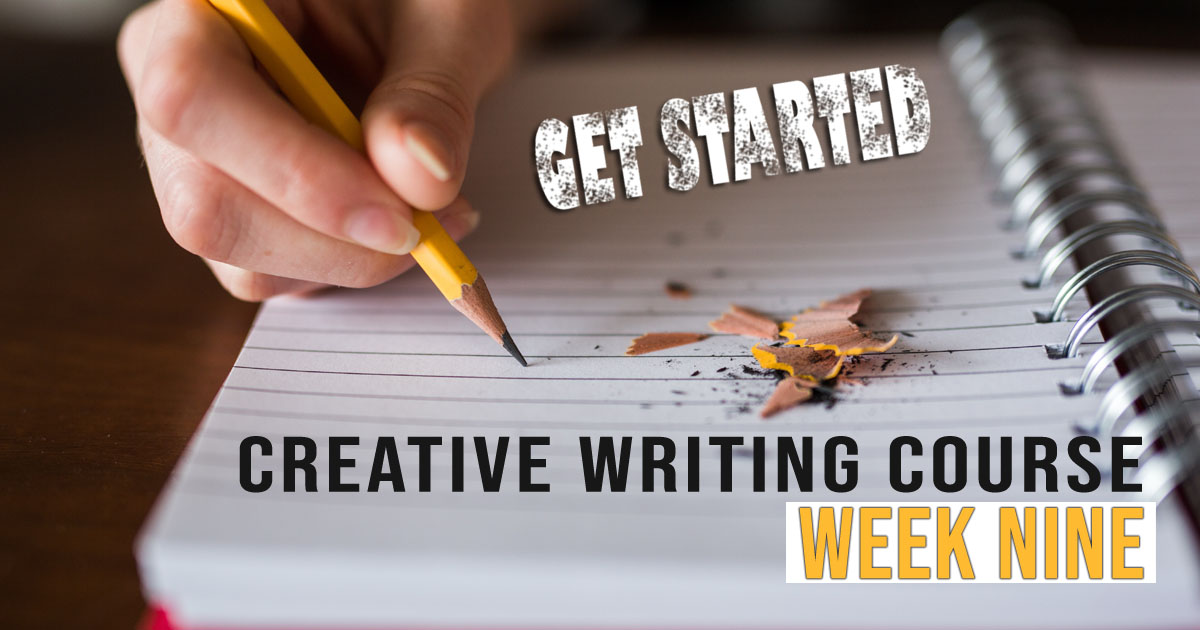 Diny
Diny
COVID19 POEMS
These are the poems I have written during the Corona virus pandemic; chronicling and commenting on the news stories and social impact of this dystopian period. There will be nineteen – if I don’t loose the will.
Do feel free to copy and share, so long as you include the copyright notice at the end of each poem.
COVID-1
Dystopian days and inebriate nights
A pause in plausible thought
And fixation secured on essentiality
Education becomes academic
Are red peppers better than green?
Copyright © Diny van Kleeff 2020
COVID-2
Is collateral damage
A merrily summed average
Of the ones who survived
Getting sick, but imbibed
Deathly-sized doses of vodka
And news?
Copyright © Diny van Kleeff 2020
COVID-3
The humble loo roll
Got a shiny new role
As an emblem of greed
For those who succeeded
To procure one or two
Dozen packs for their loo.
Copyright © Diny van Kleeff 2020
COVID-6
Stick ‘em in quick!
Don’t tell ‘em they’re sick
They’re senile, demented
Their life-span near-ended
—
War heroes, mothers and lovers and wives
Ex-nurses and bakers and people whose lives
Were fulsome and vital and just like ours now
But they’re broken, forgetful – worthless somehow
—
So, stick ‘em in quickly
The infectious and sickly
Our care homes have beds
Callous ministers said.
Copyright © Diny van Kleeff 2020
COVID-7
You can’t touch his balls
And he can’t touch yours
Though to kick them is perfectly fine
But avoid ball confusion
Preserve your seclusion
By staining your balls in some way
You can handle your own, though
Oh, please do not groan
‘Cos that’s how you play tennis today
Copyright © Diny van Kleeff 2020
COVID-9
So, The Trump’s got a new prophylactic
Well, isn’t that an interesting tactic?
He’s moved on from preaching
The merits of bleaching
To a drug that is in common use
–
But, whether it works
Is sending Twitter berserk
His dissenters are shouting
‘He’ll keel over while touting’
This drug for its off-label use
–
And who else is quaffing
To save them from coughing
Is it true, are there lies
Will The Donald survive
This drug and its contentious use?
Copyright © Diny van Kleeff 2020
COVID-11
If the figures run through
And it turns out to be true
That it kills like a flu
What will we do?
When next flu season’s here
Will we lockdown in fear
Year on year, after year
Can we shut down our lives
Will our businesses survive?
Will our mental health?
Decline with our wealth?
As the pockets of wealthy
Whose assets stay healthy
Will splash their reserves
On the final preserves
Of the small that have fallen.
Copyright © Diny van Kleeff 2020
Images from Unsplash:
COVID-9 Photo by Hal Gatewood on Unsplash
COVID-6 Photo by Gert Stockmans on Unsplash
COVID-11 Photo by Bryan Angelo on Unsplash
STILL LIFE
In a still life’s jurisdiction I discovered my benediction
Where dreams connect for their subsistence with an unreal existence
Where love is not left to roam, but grows towards its home
I ask you, my invisible friend, who serve me to spiritual ends
Bring me back to the location of my soul’s creation.
(Translated from Dutch from my book: Engel uit de voorstad).
Poem by VRJML Steijns
Copyright © RJML Steijns 2020
WEEK 11 – COLOUR A SCENE
When you describe a setting, the way you describe it depends on your own personal perspective. People often see places very differently from each other, for example; the forest glade below may appear appealing and friendly to one person, but to someone else, who may have had a bad experience in the woods, or just feel more comfortable with urban settings, it could look like a scary or spooky place to be.
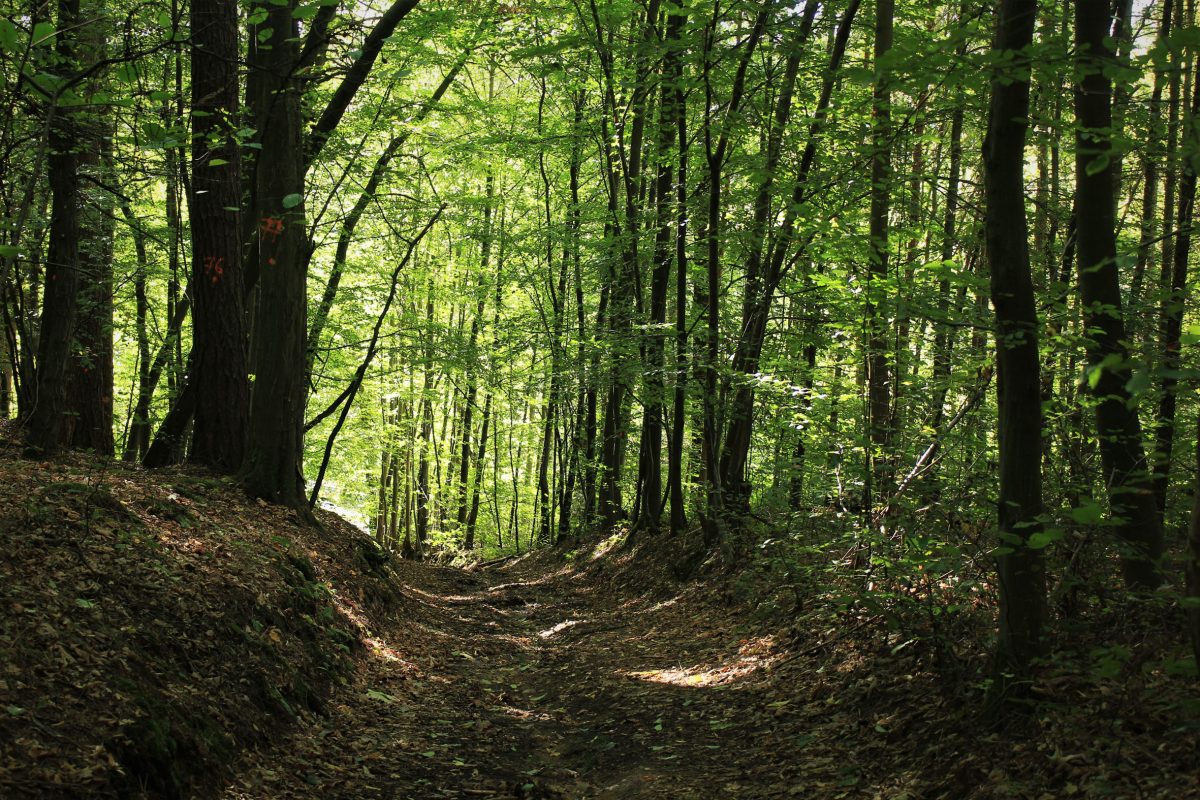
I have taken this photograph and applied three different filters to it (the first is the original, for comparison). Choose just one version of the photograph – how does it make you feel about the scene?
Who could you imagine there and what would they be doing?
As an example, in the original photo, I would imagine a woman walking her dog.
The warm tones photo reminds me of Centre Parcs (a popular forest holiday park) and I could see a family with two young children and a small dog frolicking.
The unnatural tones photograph makes me think an alien spaceship could be hovering above.
In the sepia toned one, I could see a couple of ghostly Edwardian children walking down the path.



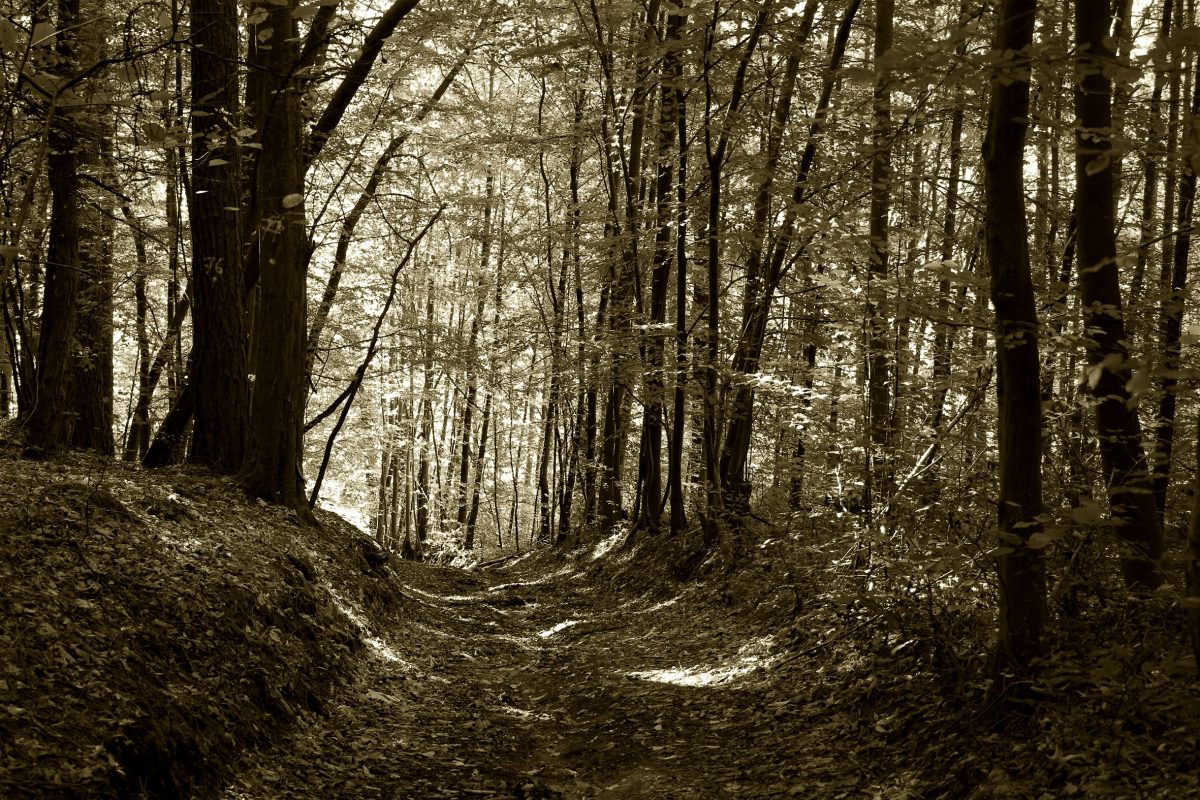
When you describe a setting, remember to describe the colours – like the filters I have used above, this will affect its atmosphere and how it ‘feels’ to the reader – remember, the reader cannot see the image in your head unless you describe it to them.
And, what sounds might you hear? Is it silent or noisy – be specific with background noises that will add to the overall sense of the place.
What would you feel? Is it cold, is there a breeze blowing round your ears, are there biting bugs, prickly branches, feathery ferns tickling your legs?
What can you see? Is there any wildlife – gentle bumble bees or nasty gnats, friendly foxes or snarling vermin, playing dogs, lovely songbirds or ‘Hitchcock’s birds’?
Scene colour exercise 1
Write a couple of paragraphs to describe each of the forest scene photographs, using colour, shade and tone to set the atmosphere.
You could put yourself or another character/s into some of the scenes and describe the scene from their point of view.
I have posted the photos again below, in a larger size so you can focus on just one at a time.




Scene colour exercise 2
Visit some different locations or recall some you have visited previously; both indoors and write down a factual account of what you see, what you can hear, what you can feel and what you can smell.
Next, decide on a specific ‘mood’ for the setting – is it going to be happy, spooky, romantic, mysterious or dangerous? Now re-write the description of the location, ‘colouring’ all aspects of it to take on the mood you have designated to it.
For example: The museum is an opulent building, with wooden panels and velvet adorning every surface. Glass cabinets displayed Victorian clothes and the musty scent of damp permeates the air.
I’m going to give it a spooky mood: The opulence of the past shrieked entitlement through the echoing wooden panels that hid secret doorways and fingerprints of those long dead. Velvet seats, now threadbare, still bore indentations, as if someone invisible was sitting next to me, while I half expected the musty-clothed mannequins to re-animate under the shadowy Victorian lamps.
Or, to rewrite it with a excited mood: The building was vast, crammed with precious treasures each screaming for my undivided attention. Indentations on the velvet viewing benches told of a many a visitor, equally enthralled with the gorgeous gowns and adornments of our past.
I would love to see your descriptions, please do post them in the comments below.
NO ONE WILL BE THERE
No one will be there,
To brush my cheek from the straying hair.
No one will be there,
To hold my hand to comfort me as I sleep.
No one will be there,
A vigilance over me to keep,
As I leave this land to go to my eternal sleep.
No one will be there,
To watch me take my final breath.
No one will be there,
As there is no one to come!
No one will be there,
As there is no one here now!
Poem by Alex Hudson
Copyright © Alex Hudson 2020
WEEK 12 – A GLIMPSE INTO WRITING FOR CHILDREN
There are some key points to bear in mind when writing for children. One of them is that fiction for children is defined by age-specific categories, because what interests an eight-year-old could seem childish and boring to a twelve-year-old.
There are various definitions, depending on whether you look at the American or English markets – below are examples of the age-group categories (I have combined several different lists to give a broad example:
| Board books | New-born to age 3 |
| Picture books | Ages 0-5 or 3-8 |
| Early readers | Ages 5-7 or 5-9, these are for children who are just beginning to reading independently. They are short and usually illustrated. |
| First chapter books | Ages 6-9 or 7-10, the stories are divided into about ten equal sized chapters and have with a word counts of no more than about 10,000 words. The Rainbow Fairies series is a good example. |
| Middle-grade books | Ages 9-12, Chapter stories with between 30,000 and 60,000, though often more towards the smaller figure. |
| Young teen | Age 12-15 Word counts of up to around 70,000 words (a bit longer if its science fiction). |
| Young adult (YA) novels | Ages 14 and up YA books usually feature a teenage protagonist, despite the fact that many of the readers are actually adults. A similar expected word count to Young teen. |
Younger children generally prefer stories with safe, happy endings, whereas older children can cope with more uncertainty or danger on the way to the ending.
Before you write a story for children, think about the stories you loved at the age you want to write for and look at what is available for that age now. Google the age category and read some of those books to get a good understanding of current themes and which stories have endured the course of time and why?
And remember:
Don’t talk (or write) down to children.
Keep plots simple, but don’t ‘dumb them down’, just make sure you explain things more fully for the younger child.
Use complex words, but in a context where the child can work out the meaning.
Know that children and adults often find different things funny.
Don’t over-complicate scene set-ups.
Characters need to jump off the page and grab the child’s attention fairly swiftly, so there isn’t time for long really long backstories
Writing for children exercise 1
Read Madeline by Ludwig Bemelmans (first published in 1939) and, or The Gruffalo by Julia Donaldson (first published in 1999) – two of the most loved rhyming books of recent and past times. They differ from each other in both topic and style, so what is it that makes them so popular?
As a parent, I can tell you that they are both pleasing to read aloud and easy to memorise. Personally, I feel that rhyming books have a soothing effect on both the parent and child.
Write a story in rhyme for the 0-5 age group. Make sure the rhymes are smooth and the lines flow. Read it aloud and wherever you stumble over the words, make adjustments to smooth it out. A parent will not enjoy reading awkward rhymes – and you have to please the parent as much as the child!
If you haven’t got access to these books you can find readings of them on YouTube, below is one I found for ‘The Gruffalo’, although I do recommend reading them yourself if possible.
Writing for children exercise 2
Thinking about First Chapter books – this is an area with a lot of possibilities because at this stage, children love consistency and ‘more of the same’. Which means that there is a great opportunity to write a chapter book series, rather than just one book.
Take a look at the Rainbow Magic books (of which there are over two hundred – you can read some extracts from them). These books are incredibly popular with the 7-9 age group and feature the same main characters and a formulaic plots involving goblins doing bad things and various fairies fixing the problem. The same applies to the Animal Arc series, Judy Moody and many of the Enid Blyton Famous Five and Secret Seven books.
Take a look at some of these books and other First Chapter books that you find in the library or on Amazon and make a list of characters and situations they cover:
| Book Series | Characters | Theme |
| Rainbow Magic | Two girls who turn into fairies, fairies and goblins. | Fairies saving the day from disaster brought on by the goblins. |
| Animal Arc | A young girl, whose parents are vets and her best friend, various different animals. | Finding animals in trouble and trying to help them. |
| Judy Moody | A young girl, her brother Stink and friends. | A strong and adventurous character getting into mishaps and having adventures. |
| Beast Quest | A boy and a girl, magical beasts. | Fighting beasts on magical adventures. |
Now try plotting your own idea for a children’s series using the ‘five finger pitch’ from the beginning of this course.
I would love to see your descriptions, please do post them in the comments below.
FATAL FLOODS
Floods! floods! floods!
You robbed me off
Am now a squatter!
I don’t sleep anymore,
What have I done?
Floods! Floods! Floods!
I can no longer eat!
I starve in my own land,
You took it from me
What have I done?
Floods! Floods! Floods!
Mosquitoes now on me
Oh! My not in peace!
My child shivers all over!
What have I done?
Floods! Floods! Floods!
I don’t eat mine , just me,
depend on donations oh!
No shelter , just under thorns,
What have I done?
Floods! Floods! Floods!
Distress call me a friend,
Cholera calls me uncle,
Bilharzia calls me backup!
What have I done ?
Poem by Vincent Omondi
Copyright © Vincent Omondi 2020
CORONA ASSASSIN’S
The world is lamenting,
The word is commencing,
Global economics are down.
No one is merciful
We will win Corona
Being here in Africa , we aren’t your Craddock.
Stop wrecking Africa,
I won’t runaway from Africa.
Corona , you forced us to remain apart from love
We strain hardening the cassava
Washing hands every time.
Leave us in peace
We will turn you into a piece.
Give us peace before piecing you.
Poem by Vincent Omondi
Copyright © Vincent Omondi 2020
WEEK 10 – FRAME STORIES
Framing is a literary method of embedding one story into another – a story within a story. It has the effect of adding layers of complexity to your story; of making it more intricate and therefore (provided you do it skilfully), more interesting to the reader.
How do you add a framework your story?
A simple form of framing is a literary form of placing ‘bookends’ at either end of a story. In the opening scene, the narrator introduces readers to important characters and the setting and in the closing scene, brings the story full-circle to the opening scene.
This works well with stories set across multiple generations, where a character from the present can open and close the embedded story (or stories) of their ancestors’ past.

This type of framing can also be used to good effect in a story where the survival of the main protagonist is in jeopardy throughout but, the author allows the reader to know they survived (possibly unscathed/possibly not) by virtue of the fact they are recounting what happened. In this case, the story will have started at its endpoint and the narrative takes you back through the events that led up to that point.
A good visual example of this is the movie Titanic, the elderly Rose recounts her tale as a passenger on the tragic ship, crossing the Atlantic Ocean. The reader is then time-slipped into the year 1912 where Rose is a young girl. The elderly Rose interjects to recount her experiences to the reader and the film ends back with the elderly Rose of today, so that even as the story is begins, you know Rose survives.
The film ‘The Princess Bride’, is story that opens with a grandfather reading a bedtime story to his grandson in the modern day world – the bedtime story is the embedded, main story line and is set in an enchanted land. Narrative periodically jumps back to interactions between the grandfather and son and film is rounded off with the grandson having enjoyed the story and the grandfather hinting at a possible connection between himself and the fantasy characters in the story.
Bookend Frame exercise
Write a 500 word ‘bookend’ style frame story. Here are some ideas that you could use, or try one of your own.
Do feel free to change the character names.
Talli is about to get married, but an event from her past has to be reconciled before she can walk down the aisle. Use the ‘bookends’ to show her before the wedding and after the wedding (if she goes through with it). The embedded story should be that of her childhood event, showing the reader why she is struggling with her decision at this point in her life.
Max was pronounced dead at eleven-hundred hours – one hour after he said ‘I do’ to Louise. The ghost of Max is narrating the days or hours up to his death and the answer to ‘who killed him?’
Adoptee, Elspeth has been sent a box of letters from an unknown source. The letters tell the story of her, as yet unknown, past.
Multiple Narratives
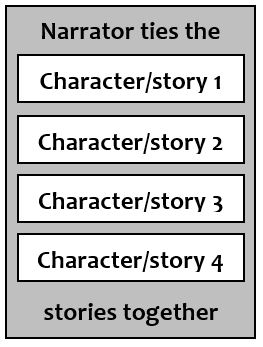
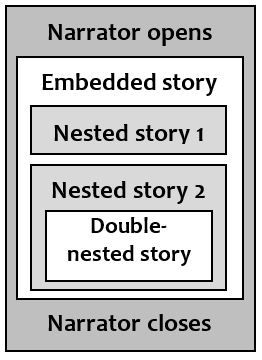
In Canterbury Tales, Geoffrey Chaucer introduces a collection of different characters, each with their own story and distinct character. The pilgrim who meets these characters, links together the various storytellers’ narratives and their relationships with each other.
In this type of framework, multiple narratives occur one after another but, in a far more complex frame system, stories can be ‘nested’, whereby the reader is introduced to an embedded story by the narrator and then, a character within that embedded story can take the reader into a further story, or set of stories, before coming back to their own stories.
There are no limits to how many times or how complex the framework and nesting can be.
Epistolary tale
This is a story written as a series of documents, such as journals, exchange of letters and even newspaper articles.
Dracula by Bram Stoker is a well-known example and The Jolly Postman by Janet and Allan Ahlberg, where the different stories are told through a series of letters (actual letters in envelopes within the book), delivered by a jolly postman. Other examples are Bridget Jones Diary by Helen Fielding and The Secret Diary of Adrian Mole by Sue Townsend.
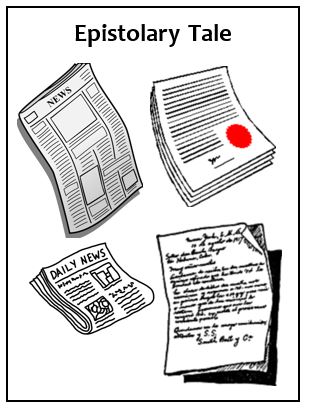
Epistolary Tale exercise
Choose one of the options below to create your epistolary tale of between 500 and 1500 words:
From your local newspaper, find a ‘reader’s letter’ that feels like there could be an ongoing saga and create a 500 word story through a series of linked letters that appear in a paper.
Or, check the ‘searching for love’ advertisements and create a story around the posts and the people posting them.
Or your story could be made up of a series of journal entries, Tweets or Tinder entries!
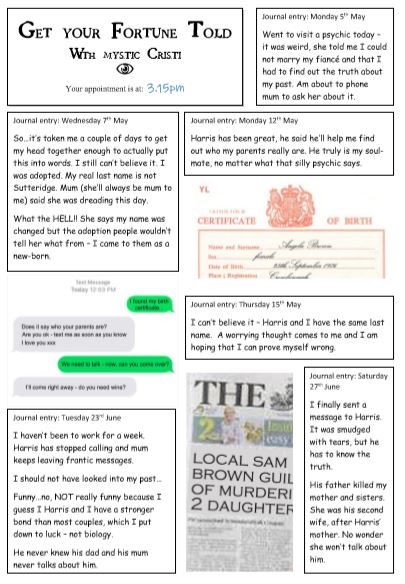
If you fancy doing something a bit different, get an A4 sheet of paper and paste several cut-out letters from newspapers onto it and create a visual story.
Here’s an example of one that I made – you can also download a pdf copy of my Visual Epistolary tale in A4 that can be read more easily.
BLOG Epistolary example download exampl epistolary tale.
I would love to see your stories, please do post them in the comments below.
WEEK 9 – HOOKS AND CLIFFHANGERS
The Hook
A narrative hook is a writing technique in the opening of a story that literally ‘hooks’ the reader in so they feel compelled to continue reading.
The length of the ‘opening’ can be anything from the first few paragraphs of a short story, to the first few pages of a novel, but ideally, it occurs in the opening sentence and ‘grabs’ the reader immediately.
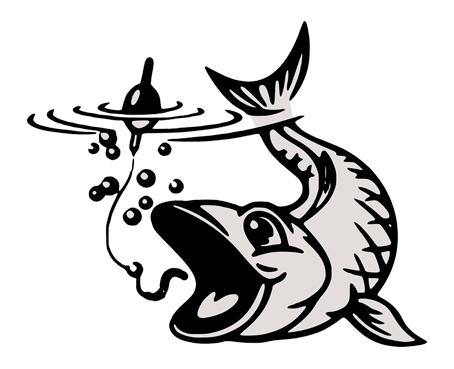
You need your reader to ask; ‘who’, ‘what’ or ‘why’ as quickly as possible and then keep reading in order to answer that question. Remember, your reader has a lot of distractions (social media is your biggest rival).
You could begin your story at a pivotal moment, have an unusual situation, serious conflict or dread.
Hook exercise 1
Take a look at a variety of books and see if you can find the intentional hook and rate how effective it is for YOU. Perhaps visit the library and choose a selection of different genre books to see how quickly the hook is set, or are there novels without a discernible hook? Do any particularly ‘grab’ you?
Remember, a hook isn’t a hook for everyone – for some of your audience it may be the very thing that turns them off your story – you can’t please everyone!’
Who is your audience?
The style of your hook will depend on the type of person likely to be interested in your genre of writing. For example, a big explosion probably won’t entice someone who enjoys paranormal romance, or chick lit to keep on reading.
What is the purpose of your opening?
- Are you giving your readers a key piece of information (or a clue)?
- Are you presenting a reason for what comes next?
- Are you jumping straight into a piece of action that will get your readers’ heart racing and compel them to keep reading?
- Perhaps you are pulling your readers into a world that will fascinate or intrigue them.
- Or maybe you will use unusual terminology (medical or scientific, or ‘otherworldly’) that will pique the readers’ interest.
Whatever the hook, you need to understand your reason for using that particular piece of narrative in order to use it effectively.
Hook exercise 2
Create the opening paragraph for a short story in at least three of the following genres. Remember to use different techniques and language, appropriate to the genre. Now test your hook paragraphs on someone else and ask them which ones would make them want to read the whole story.
Romance
Thriller
Fantasy Adventure
Comedy
Science-Fiction
Teen-Angst story
Fairy story
Story for a younger child
Gothic
Ghost Story
A Western
The Cliffhanger

A ‘cliffhanger’ is an unfinished, dramatic or suspenseful situation that leaves the reader on a ‘knife’s-edge’ wondering what will happen next.
The purpose of a cliffhanger is to compel your reader to turn to the next chapter, or to want to come back to your story if they have had to put it down. They are employed at the end of each chapter and, if your book has a sequel, can be used at the end of the book.
(Note: I keep rattling on about compelling your reader to keep reading – it REALLY IS of vital importance!)
Some key points about cliffhangers:
- Often the protagonist is left in a precarious situation
- A cliffhanger is often abrupt – a sharp shock
- A cliffhanger need not be a life or death situation, but it should be something your reader will care about
- A cliffhanger can be a setback – a path that is halted and changed by an event.
Cliffhangers at the end of a chapter
A cliffhanger doesn’t have to be dramatic – although often they are. It can be as simple as an unresolved problem, or an unanswered question that the reader will look forward to finding out what happened.
Will she kiss him?
What will be in the package?
Did she pass her exam?
A reader will expect a swift resolution, or answer to the cliffhanger in the next chapter. Don’t drag it out unnecessarily (or repeatedly) – remember, your reader needs to ‘earn rewards’ from reading your story by gaining satisfying resolutions as well as unexpected twists.
You need to nurture your reader throughout your story; give and take, let them be right and sometimes prove them wrong with their plot guesses. Play with their emotions, but ultimately leave them satisfied and eager for more.
An open ending
Be cautious about ending a story on a cliffhanger because this can upset the readers who like their tales to be neatly tied up at the end. Some stories end on a ‘semi’ cliffhanger, in that the reader is left to ASSUME the ending, based on the evidence given. It is a literary technique that can work well in Paranormal style stories, where an air of mystery is expected and in Romance stories where the ending is often left with the characters looking very much like they are going to get together and the author encouraging that assumption, whilst still leaving the details of the ending open to interpretation.
Cliffhanger exercise
Cliffhangers can come in many varieties – try writing the last paragraph of a chapter for each one of the list below. You can create new characters and scenarios each time, or use the same characters in different scenarios.
For example: [using Emotional] He stared at her, tears burning the corners of his eyes. Could he just spit out the words that would change everything for her?
Emotional
Dire peril
Drama
Personal discovery
Magical event
Tense situation
Unexpected arrival
Sudden disappearance
I would love to see your hooks and cliffhangers, please do post them in the comments below.
